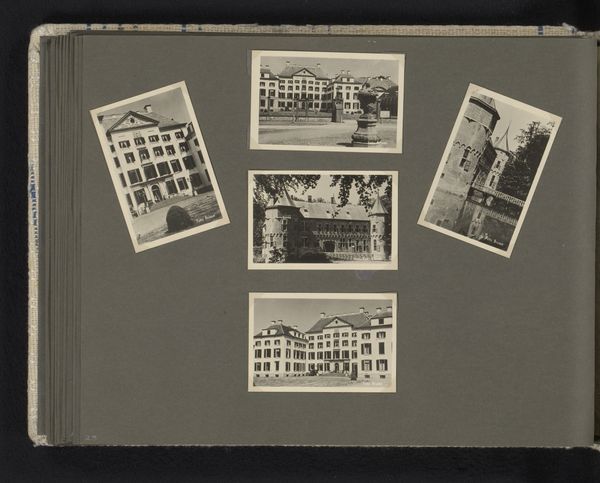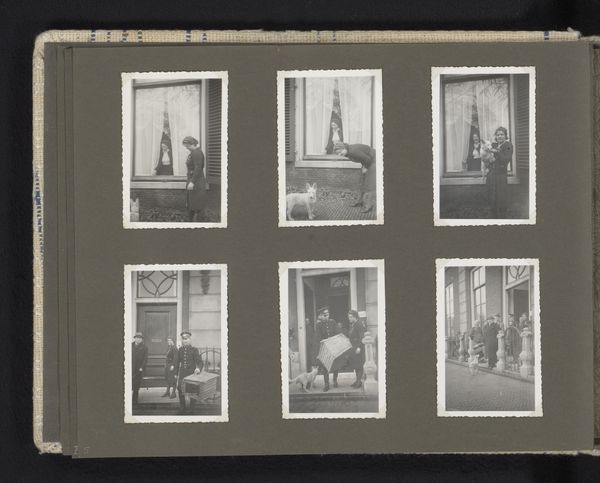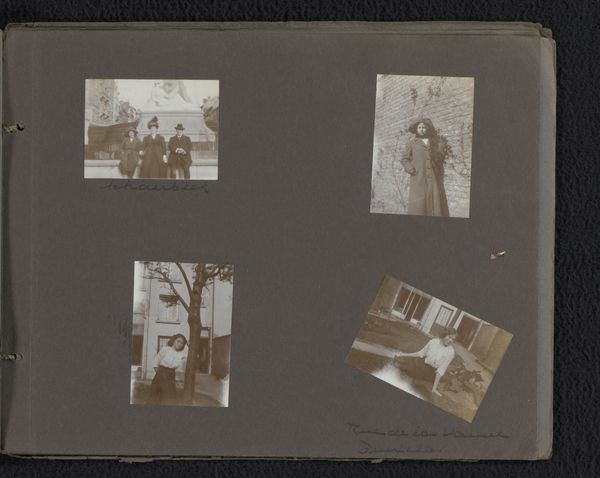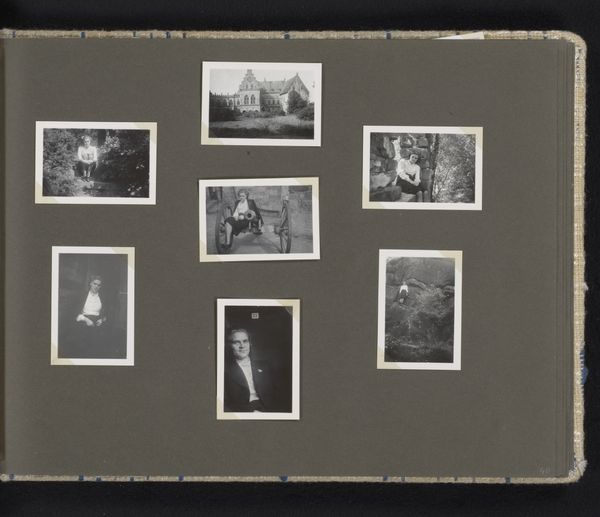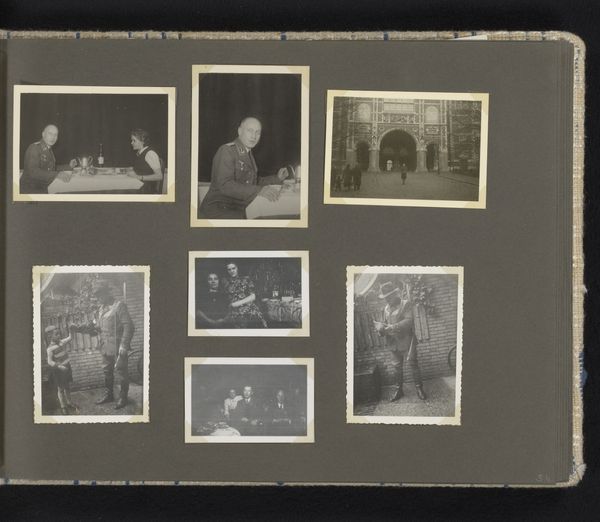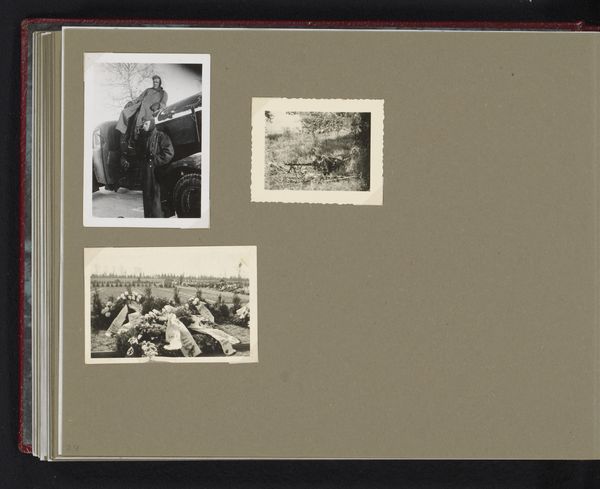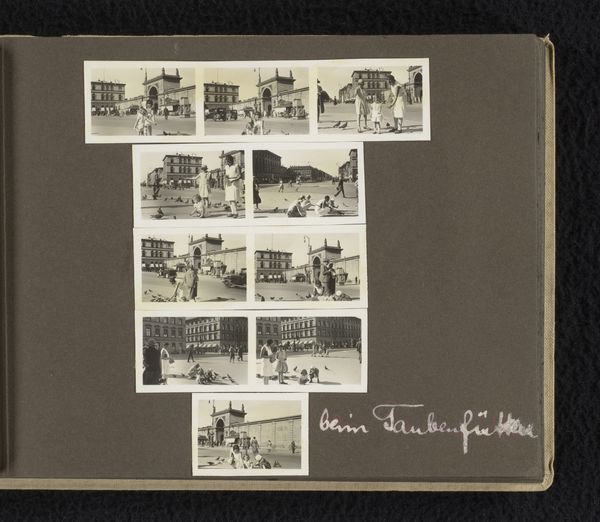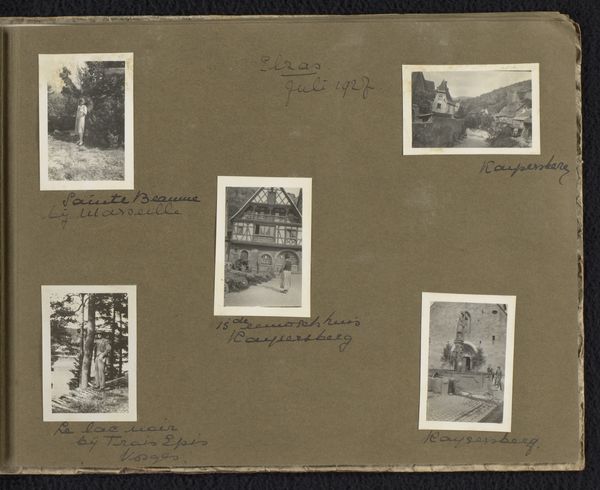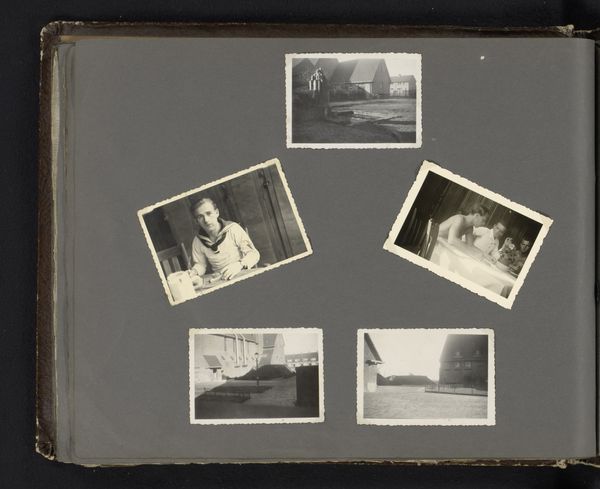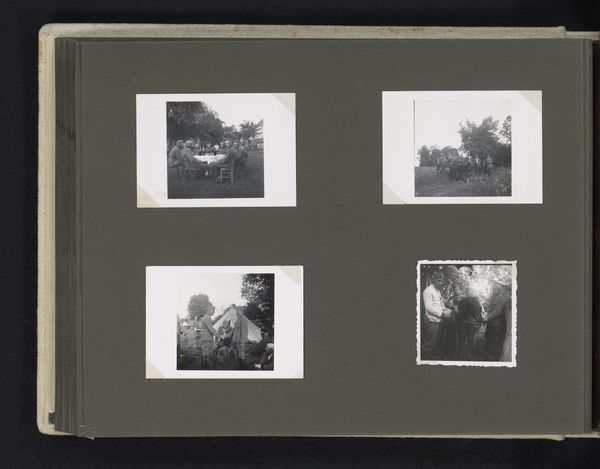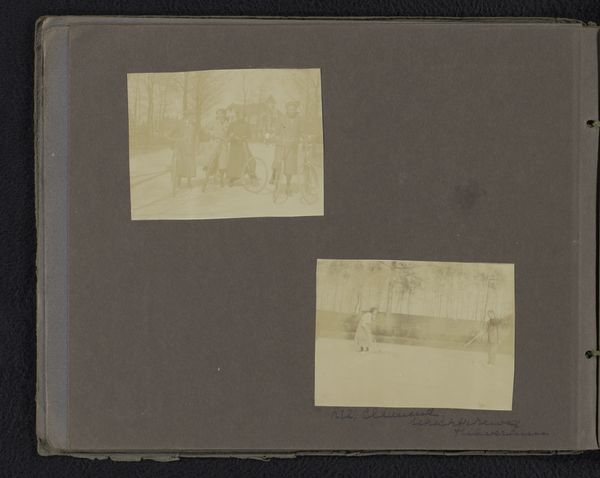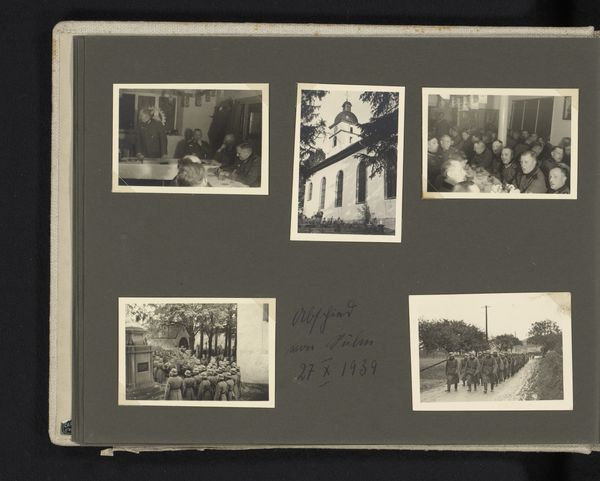
collage, photography, albumen-print
#
portrait
#
collage
#
photography
#
cityscape
#
history-painting
#
paper medium
#
albumen-print
#
realism
Dimensions: height 50 mm, width 70 mm, height 245 mm, width 310 mm
Copyright: Rijks Museum: Open Domain
Curator: Here we have an intriguing photographic collage titled "Amsterdam," tentatively dated between 1943 and 1944. The artist remains anonymous, but its presence here at the Rijksmuseum hints at the historical significance embedded within these albumen prints pasted onto paper. Editor: My first thought? Fragments. Disconnected, like scattered memories in a faded photograph album. There’s a strange distance to it, almost voyeuristic, peering into private moments in a very public place. Curator: That sense of fragmentation is crucial. The choice of collage, particularly during wartime, reflects the disruption and fractured reality of occupied Amsterdam. We see portraits intermingling with urban landscapes. Editor: Absolutely. It's not just documentary; there's a definite emotional texture. The portraits, especially the ones featuring military figures, seem so composed, so... posed. They are unsettling to juxtapose these next to civilians just going about their days amid these oppressive events. Curator: The act of collecting these photographs, likely taken by various individuals, and assembling them speaks to the process of constructing a narrative. A narrative of resistance, perhaps, or maybe just a record of life under occupation? We cannot determine with certainty what perspective to attribute the original artist, or compiler. Editor: You nailed it; they feel assembled like clues. Who are these people? What are they thinking? Why these specific snapshots and why grouped this way? It practically begs you to invent stories, imagine connections. Maybe the lady by the canal knows the official behind the desk? Curator: The absence of explicit propaganda is noteworthy. Unlike typical war photography intended for nationalistic purposes, "Amsterdam" provides a glimpse into everyday existence and hints to private ones. We can interpret this through the scope of resistance, resilience, or potentially, acquiescence to daily activities under such historical pressures. Editor: Yeah, this whispers rather than shouts. There's an odd beauty, a grim beauty, in those ordinary scenes framed by such extraordinary times. Each frame looks simultaneously trapped yet very real and organic. I appreciate this approach to visual history and archiving because in many ways the medium enhances that. Curator: Precisely. It's a poignant reminder that history is rarely monolithic. I hope viewers come away considering photography as a tool of memory and political agency. Editor: Agreed. For me, it's that quiet power of observation, a way to capture fleeting moments against a backdrop of overwhelming historical shifts. And maybe a reminder of our collective ability to construct and adapt a record of anything.
Comments
No comments
Be the first to comment and join the conversation on the ultimate creative platform.
